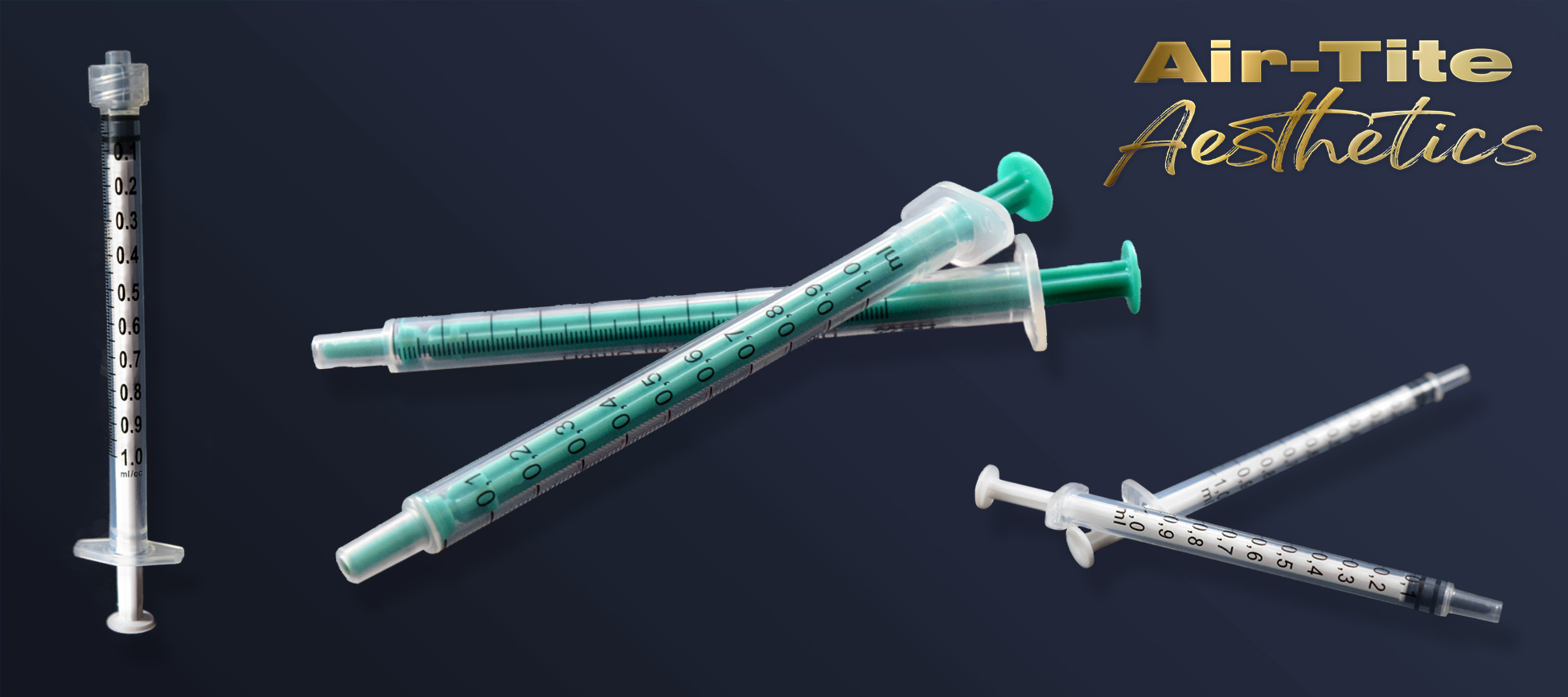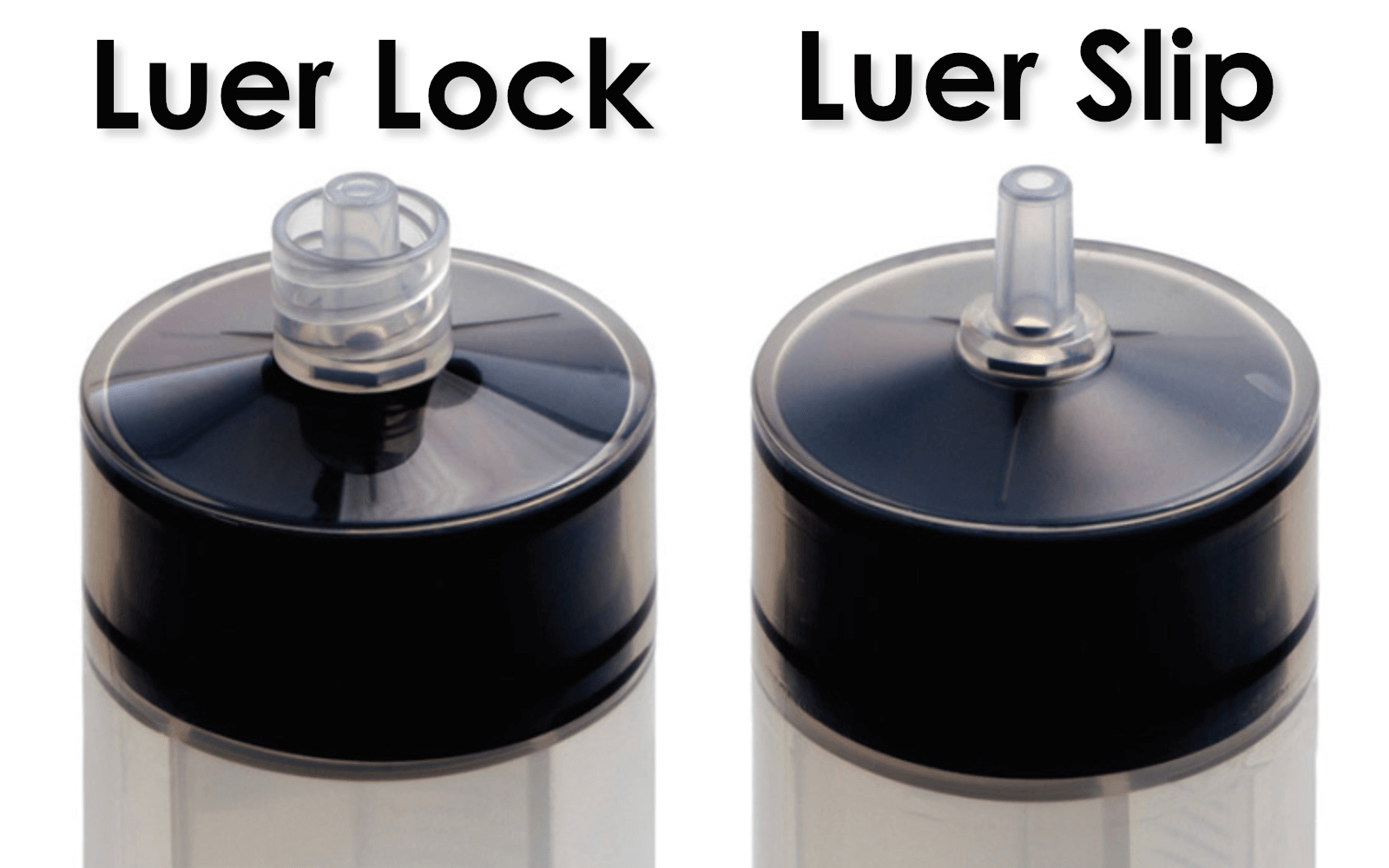
When it comes to selecting the correct syringe for your aesthetic practice, there are a few considerations that will allow you to make a more informed buying decision.
Read on to learn more about the top 13 frequently asked questions about aesthetic syringes.
The cost of a syringe will vary due to several factors. The type of syringe, the materials that it’s made from (more expensive polycarbonate vs. polypropylene), the size of the syringe, and the brand will all have an effect on the cost. A box of 100 syringes can be purchased for less than $10 in some instances, but you may also find options that can exceed over $50 per box - depending on these varying factors.
In general, Insulin syringes with fixed needles will be less costly than a plastic syringe and sharp needle combination.
Some syringes come prepackaged with safety needles attached. These combination packs have clips or covers that slide over the needle tip to prevent the person injecting it from receiving a dangerous prick. These types of products can be more expensive than those without the added level of protection.
For syringes that accept a detachable needle, the smallest option available is the 0.5mL MinimLL syringe. Air-Tite Products is also known for our various 1ml solo syringe options. For fixed needle applications, we have syringes as small as 0.3mL.
Luer lock syringes have threaded locking mechanisms at the tip to secure a needle hub. The hub of the needle is twisted onto these threads in a screw-like fashion to keep it “locked” in place. This is ideal for applications which produce a high amount of pressure, or just to provide an extra level of security for the user.
A luer slip syringe provides a quicker fit, where the needle hub is simply pushed (or “slipped”) onto the tip. The friction from the standardized fit of the needle hub and the syringe tip keeps the needle attached.
Both luer lock and luer slip syringes accept standard hypodermic needles.

A 3-part syringe has the barrel, the plunger/piston, and a rubber tip on the plunger, whereas 2-part syringes do not have the rubber tip on the plunger (as the plunger is engineered to form a perfect fit).
Click here to view a video that explains the differences in more detail.
“Dead space” refers to the effective area which holds the product that cannot be extracted with normal use. Low Dead Space (LDS) is a term used to describe syringes that allow for maximum product usage without waste. This translates to a surprising amount of money saved—up to $2,300 per year per patient.
LDS syringes have an extended tip on the end of the plunger (the piston inside the syringe barrel), which extends to the tip of the Luer taper. Non-low dead space syringe plungers stop where the Luer tip starts.
Fixed needle syringes, such as insulin syringes, have the smallest amount of dead space. These inexpensive syringes offer size advantages for accurate dosing, while providing the lowest possible dead space. However, syringes with fixed needles lose the flexibility that comes with being able to swap out needles or use a draw-up needle. Transferring the product to another syringe can also be very challenging using fixed needle syringes.
Low Dead Space syringes are an excellent alternate option that still reduce product waste, but allow for smaller sized needles to be attached.
Our syringes can be used in the following aesthetic procedures:
A majority of the aesthetic syringes from Air-Tite are made out of polypropylene. We also carry a popular polycarbonate syringe.
Our primary brands of aesthetic syringes are sterilized with Ethylene Oxide (EtO). Other sterility options are gamma sterilization for certain brands.
Purchasing full cases allows for discounted pricing in most instances. It can also help with inventory management in a busy clinic. Clinicians tend to notice a dwindling stack of boxes and that provides them with sufficient time to reorder—versus having only a single box on the shelf and needing another syringe or two to finish the remaining patients for the day.
Some of our best-selling aesthetic syringe products (1mL low dead space) are:
Our newest Aesthetic syringe is the 0.5mL Low Dead Space Luer Lock MinimLL syringe.
Syringes will always require attachable needles for injections, unless they are fixed needle syringes.
Other supplies include syringe-to-syringe connectors for transferring, the IceStick for patient comfort, and various clinical supplies, such as gauze, tape, bandages, and gloves.
Aside from plastic surgeons and med spas, our syringes can benefit a wide range of industries and practices, such as:
Low Dead Space aesthetic syringes come in a wide variety of sizes and materials and can help your practice save a significant amount of money by eliminating product waste. If you’d like to learn more about our available products, click the link below.